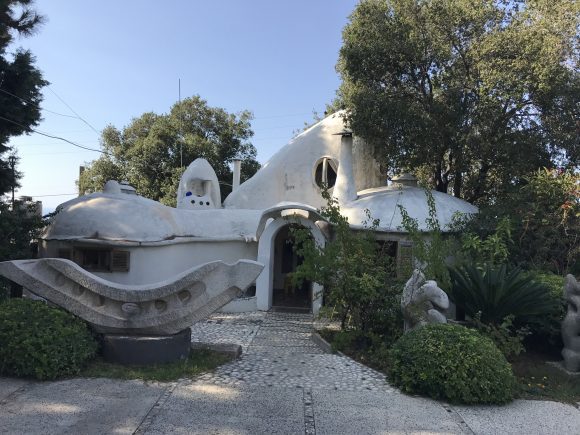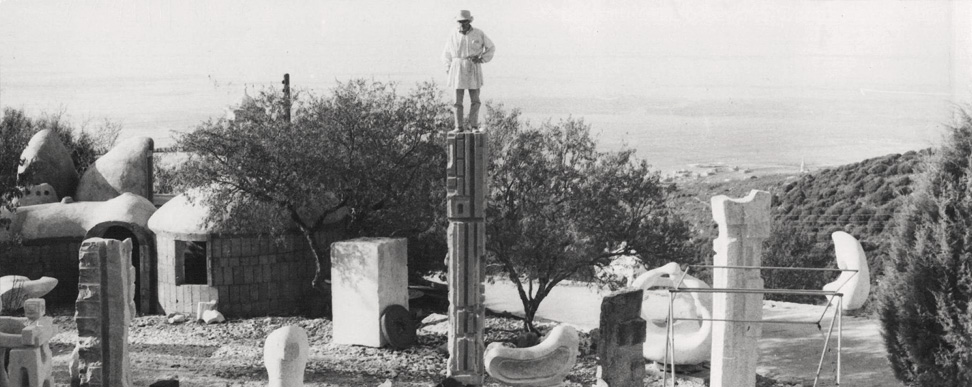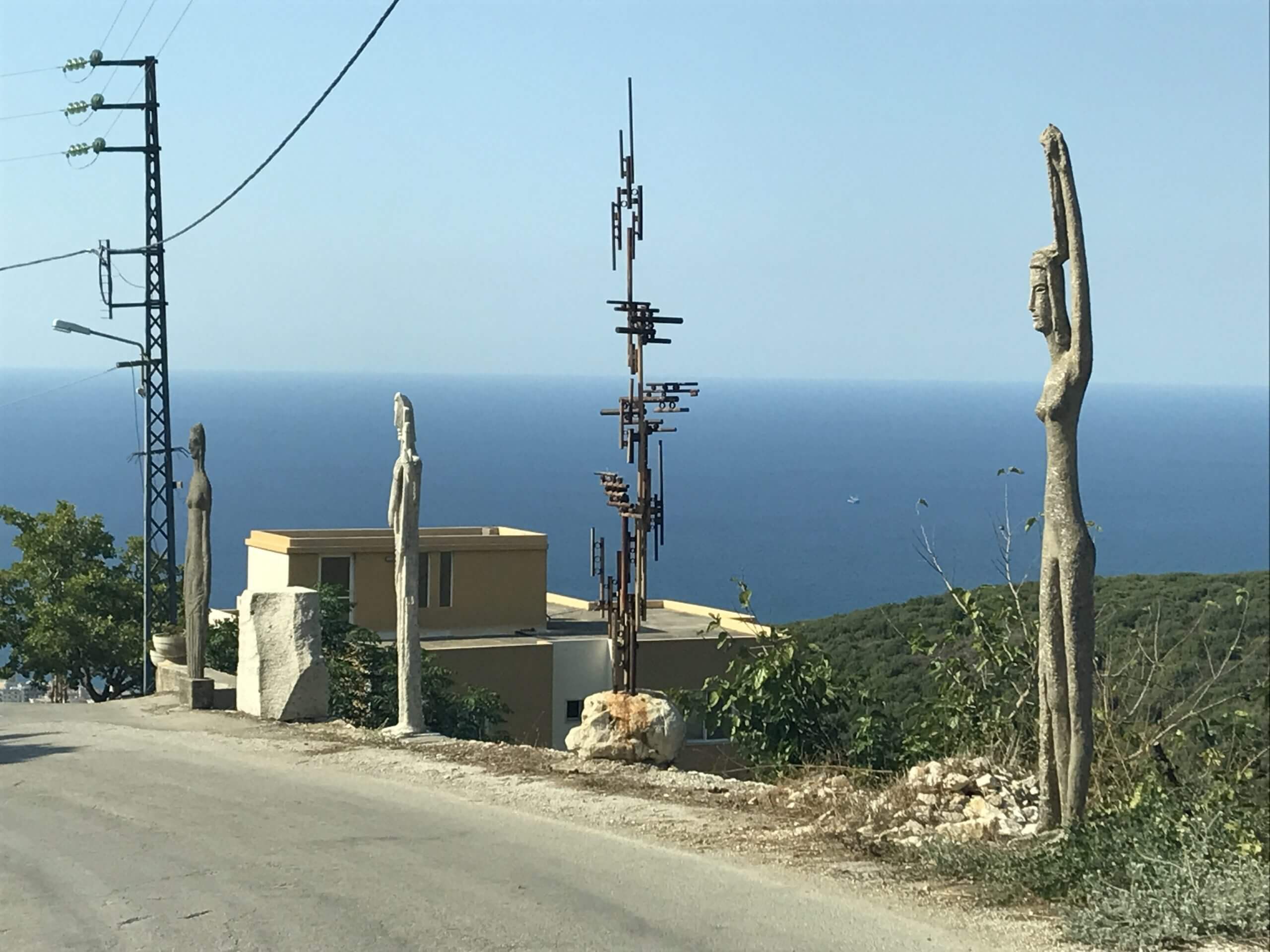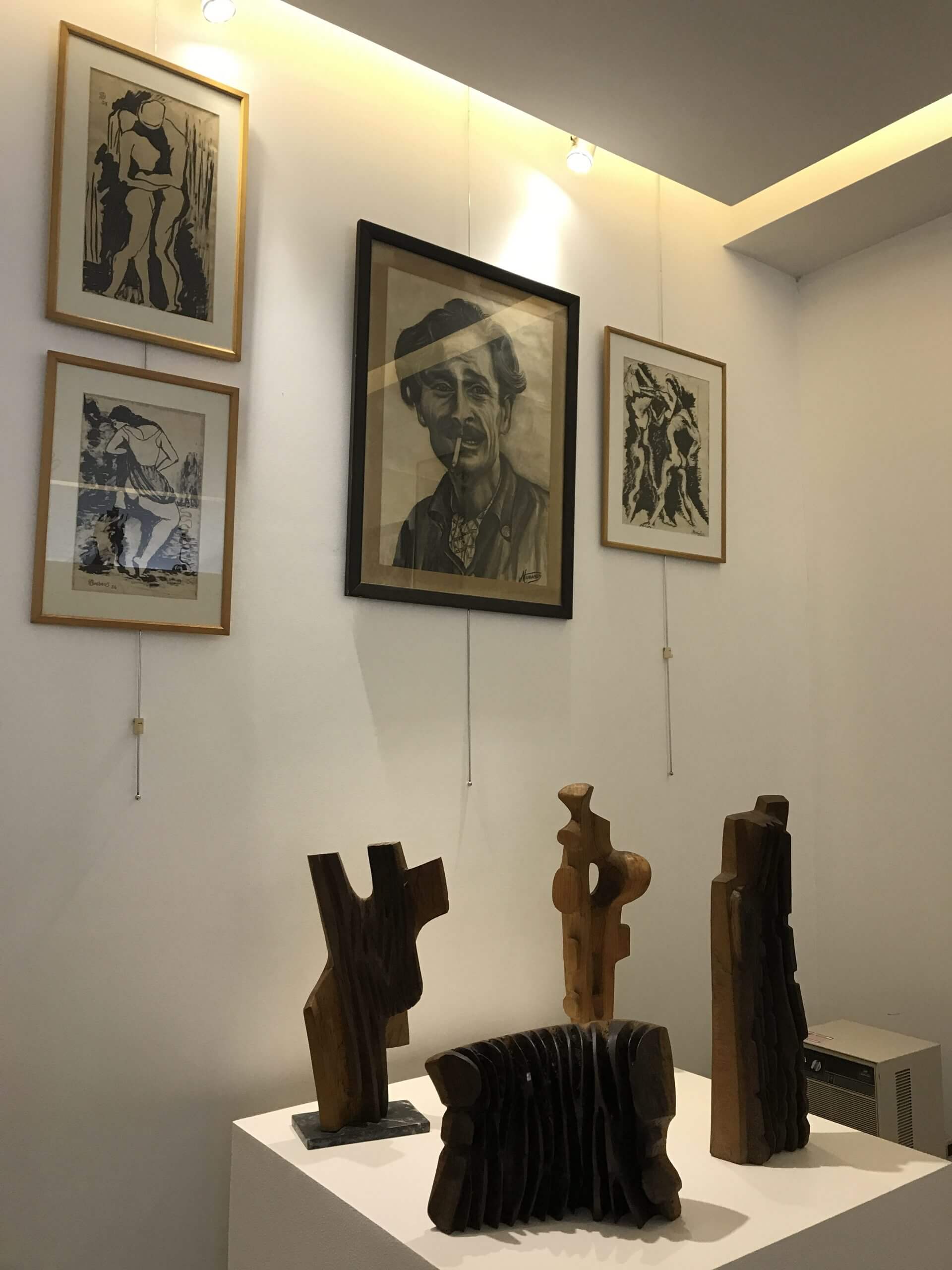 Basbous Museum
Basbous Museum


Basbous Museum, located in Rachana village in Lebanon, is an open-air museum. The village is located in the district of Batroun, in the North of the province, about 49 km from the capital Beirut and 36 km from the centre of the province in Tripoli. Rachana is made up of 270 registered inhabitants and 107 permanent residents. The calm village is known for its tranquillity. Yet, it has transformed into a village of Fine Arts, and an open-air museum, by the three sculpture brothers; Michel Basbous (1921-1981), Alfred Basbous (1924-2006), and Youssef Basbous (1929-2001). The trio has adorned the village with their sculptures and carvings on the roads, houses, and different areas, establishing the foundations of Lebanese contemporary sculpture as pioneers.


From an early age, Michel had an interest in sculpting by accident, when he broke a nail and used it as a chisel to make shapes of stones. As for Alfred, he worked as a construction worker to build houses. In 1945, Michel enrolled in the Lebanese Academy of Fine Arts in Beirut to turn his hobby into a profession. He later decided to move to Paris to specialize in sculpting. After his return from Paris, Michel returned to Rachana and began sculpting with his brothers to the point that space would not accommodate the number of sculptures. Therefore, he began working outdoors. Sculptures spread in the outskirts of the garden and the house to reach Rachana and its entrance.


The village opened up to art in the 1950s, when it hosted one of the first festivals in the country, featuring plays and concerts attended by famous artists and officials of that era. Rachana owes its exposure to fine arts to the Basbous brothers–Michel, Alfred and Youssef– whereby Michel decided to turn the village of Rachana into an art space. Certainly, he established a festival in collaboration with the “Lebanese Theater Movement” and with the help of Alfred, Youssef, and all the people in the village to prepare performances. As such, they staged a Macbeth among the haunting sculptures. Including international productions, among them Seven Against Thebes directed by Jack Lang who was later appointed as France’s Minister of Culture in 1981. But the glare of the movement quickly subsided, communication and media were difficult. Encouraging visits from the Presidents of the Republic were not enough to fund a huge cultural ambition of this magnitude. Despite all of the difficulties, Michel managed to put his village on the map internationally.


In 1981 Michel passed away, Alfred and Youssef continued his legacy. Alfred conceived Rachana as a place to host sculptors from Arab and foreign countries for 85 days. In 1994, Alfred launched the International Sculpture Atelier, or the Rashoman Symposium, which held its annual sessions until 2004. The establishment of such symposium of its kind made it the first Lebanese museum of contemporary art and sculpture to show the work of sculptors who come from different countries around the world to participate in the symposium for 15 days and leave their sculptures in open-air Rashana to be a crossroads of cultures. The same year of its establishment, Rachana was named by UNESCO as “the world capital for open-air sculpting”. As of today, the result of the establishment of the international sculptor atelier is an international sculpture park. The park groups 71 sculptures of 66 artists from different countries around the world, 39 in total.


Basbous Museum is a place where art meets nature, sustaining a harmonious relationship between the two over the last 5 decades. Visitors of Rachana village are welcomed by its habitats, i.e. Basbous’ sculptures. The sculptures accompany visitors along the roads, corners, and houses.


The Basbous museum comprises a garden, hills, sculptures, and modern architecture. As such, the museum is Michel Basbous’ house, which is now inherited by his son Anachar Basbous who is also a very well-established contemporary artist. In the small foundry, lived his wife, Thérèse Aouad (1934-2020), who passed away recently. She is a poet, author, journalist, and professor. Aouad has written a book on her later husband to document the work he has achieved to develop the village of Rachana. The family is very prided by their upbringing and achievements in their career and personal life.


The museum is composed of a domestic area, an artist studio, an open-air gallery, and finally an indoor gallery. When you first enter the museum, you will walk into a garden, where there are permanent viewers and guardians of this space. Many of these sculptures are made by Michel, especially his early ones. As you explore the space around, you encounter contemporary architectural sculptures that juxtapose nature and greenery. Going to a completely different atmosphere, the indoor exhibition presents the early works of Michel, as well as drawings, archival materials, and sculptures. The collection of works is curated in a salon-style, presenting a more of a traditional perspective than the open-air experience. The indoor-gallery does not only function as a space of display but also as preservation.


The legacy of the three sculpture brothers remains visible to this day, and it is carried out by the next generation, Anachar, Michel’s son. He is leading the development of the village, the museum, and the foundation, in addition to his role as an artist. The open-air museum is a concept that is used to preserve threatened sites, but in this context, it is an expansion of the ambitions of three brothers who put their small village on the international map.


 Basbous Museum
Basbous Museum 
